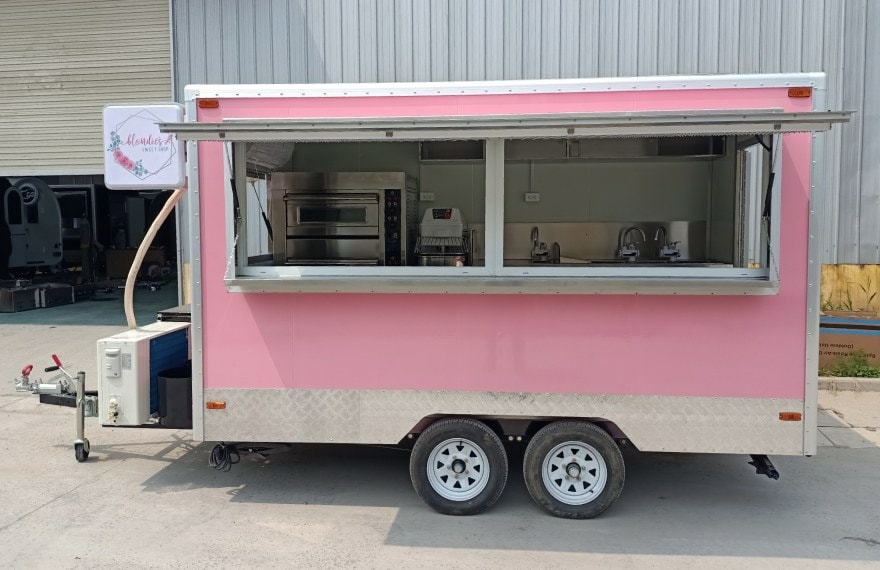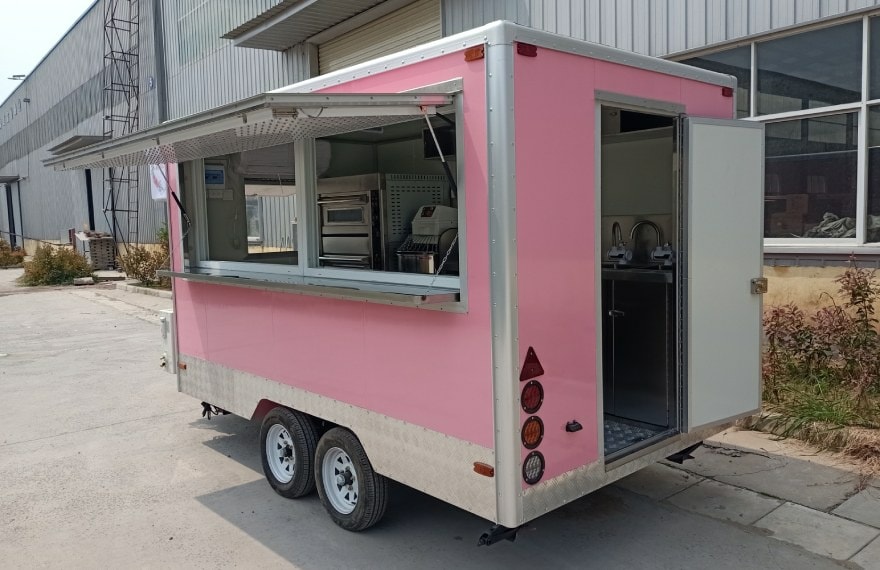Pop Up Camper to Food Trailer
Pop Up Camper to Food Trailer: Transforming Your Mobile Business

Pop Up Camper to Food Trailer Photo by MemoryCatcher on Pixabay
Image Source: Unsplash
Pop Up Camper to Food Trailer for transforming it into a fully functional food trailer. In this comprehensive guide, we will explore the process of converting a pop-up camper into a food trailer, providing you with all the information you need to get started on your mobile business venture.
Table of Contents
- Introduction
- Benefits of Converting a Pop-Up Camper
- Planning Your Conversion
- Assessing Space and Layout
- Budgeting for Materials and Equipment
- Researching Local Regulations and Permits
- Gutting and Preparing the Pop-Up Camper
- Removing Furniture and Fixtures
- Inspecting and Repairing the Interior
- Reinforcing the Structure
- Designing the Layout
- Creating a Functional Kitchen Space
- Maximizing Storage Solutions
- Incorporating Essential Equipment
- Electrical and Plumbing Considerations
- Wiring and Lighting Installation
- Plumbing and Water System Setup
- Ensuring Safety and Compliance
- Customization and Aesthetics
- Exterior Design and Branding
- Interior Decor and Signage
- Adding Unique Features and Accessories
- Equipment and Appliances
- Choosing the Right Cooking Equipment
- Selecting Refrigeration and Storage Options
- Considering Power Sources and Generators
- Safety and Maintenance
- Fire Safety Measures
- Regular Cleaning and Maintenance
- Inspections and Certifications
- Launching Your Pop-Up Food Business
- Creating a Menu and Pricing Strategy
- Marketing and Promoting Your Business
- Establishing Relationships with Suppliers and Vendors
- Conclusion
1. Introduction
Food trucks and pop-up trailers have become increasingly popular in the culinary industry, offering entrepreneurs a flexible and cost-effective way to start their own business. Converting a pop-up camper into a food trailer is a creative and innovative approach that allows you to customize your mobile kitchen according to your specific needs and preferences.
2. Benefits of Converting a Pop-Up Camper
Converting a pop-up camper into a food trailer offers several advantages compared to starting from scratch or purchasing a pre-built trailer. Some of the key benefits include:
- Cost-effectiveness: Pop-up campers can often be found at affordable prices, providing a cost-effective base for your food trailer project.
- Mobility: Pop-up campers are designed to be lightweight and easily towed, allowing you to take your food trailer to various locations, events, and markets.
- Versatility: The existing structure of a pop-up camper provides a versatile canvas for customization, enabling you to design a layout that suits your specific culinary requirements.
- Storage and Convenience: Pop-up campers offer ample storage space, allowing you to efficiently organize your equipment, supplies, and ingredients.
- Weather Resistance: With features such as adjustable roofs and sturdy construction, pop-up campers can withstand various weather conditions, ensuring that your business can operate year-round.
3. Planning Your Conversion
Before embarking on your pop-up camper to food trailer conversion, careful planning is essential. Here are some key considerations to keep in mind:
3.1 Assessing Space and Layout
Evaluate the available space in your pop-up camper and determine how it can be optimized for your food trailer. Consider the layout of your kitchen, customer service area, storage, and any additional features you may want to incorporate.
3.2 Budgeting for Materials and Equipment
Create a detailed budget that includes the cost of materials, equipment, permits, and any professional services you may require. Research prices and compare options to ensure that you stay within your budget throughout the conversion process.
3.3 Researching Local Regulations and Permits
Before proceeding with your conversion, it is crucial to research and understand the local regulations and permits required to operate a food trailer in your area. Contact your local health department or food service authority to ensure compliance with all necessary regulations.
4. Gutting and Preparing the Pop-Up Camper
To start the conversion process, you will need to remove all existing furniture and fixtures from the pop-up camper. This will provide you with a blank canvas to work with. Inspect the interior and make any necessary repairs to ensure a solid foundation for your food trailer.
4.1 Removing Furniture and Fixtures
Carefully dismantle and remove any furniture, appliances, and fixtures from the pop-up camper. Dispose of or sell these items, as they may not be suitable for your food trailer.
4.2 Inspecting and Repairing the Interior
Thoroughly inspect the interior of the pop-up camper for any damage or wear. Repair any structural issues, such as leaks, rot, or weak spots, to ensure the safety and longevity of your food trailer.
4.3 Reinforcing the Structure
Depending on the age and condition of the pop-up camper, you may need to reinforce the structure to support the weight of the kitchen equipment and appliances. Consult with a professional or experienced builder to ensure proper reinforcement.
5. Designing the Layout
Designing an efficient and functional layout is crucial for the success of your food trailer. Consider the workflow, space utilization, and accessibility when planning the placement of your kitchen equipment, storage areas, and customer service counter.
5.1 Creating a Functional Kitchen Space
Arrange your cooking equipment, such as grills, fryers, and ovens, in a way that optimizes workflow and minimizes the risk of accidents. Ensure that you have sufficient workspace and counter space for food preparation.
5.2 Maximizing Storage Solutions
Utilize the available space in your food trailer efficiently by incorporating storage solutions such as shelves, cabinets, and overhead racks. Consider the types of ingredients, supplies, and utensils you will need and design storage areas accordingly.
5.3 Incorporating Essential Equipment
Research and select the necessary equipment for your specific culinary needs. This may include refrigerators, freezers, sinks, ventilation systems, and other appliances required for food preparation and safety.
Stay tuned for the next part of this article series, where we will continue exploring the conversion process and delve into electrical and plumbing considerations, customization and aesthetics, equipment and appliances, safety and maintenance, and launching your pop-up food business.
Disclaimer: The information provided in this article is for informational purposes only. Always consult with professionals and local authorities to ensure compliance with regulations and safety standards.












